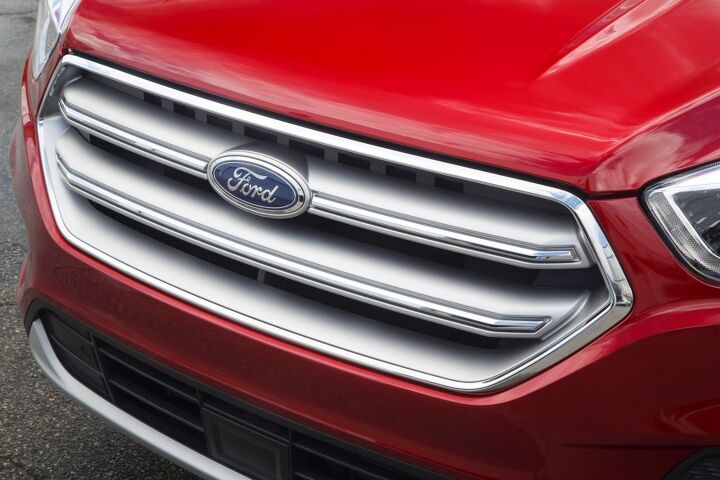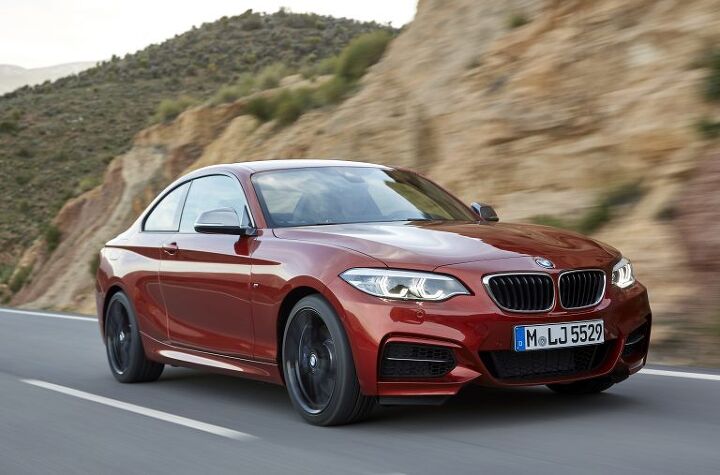#ProductionStrategy
Ford CEO Outlines New Vehicle Development Plan, Shifts Investments, Trims Fat (and Models)
After much speculation, Ford CEO Jim Hackett has finally outlined where his company’s dollars will be spent in the foreseeable future. Hackett spent his summer performing what Ford called a “four-month deep dive” into the company’s strategy and business operations to see what changes needed to be made. His conclusions? This may surprise a few readers, but Ford will continue building and selling automobiles.
Alright, that isn’t a bombshell, but the brand is trying to frame itself as the Ford you’ve always trusted while also letting everyone know it’s still a “mobility company” with its eyes fixed on tomorrow. Without the public relations veneer, that plan translates into a reduced number of production models and trims, more money for electrification R&D, less for internal combustion engines, and a significant reduction in material costs.
Hackett’s address also served to reassure the nervous shareholders who ousted his predecessor, Mark Fields. Ford’s stock declined more than 30 percent during Fields’ tenure and many complained that his vision of transitioning from a traditional automaker to a Silicon Valley look-alike was partly to blame. Hackett did everything in his power to ease those fears.
“We’re going to be in the vehicle business moving both people and goods. Some myth about not being in the car business is gone,” Hackett told Wall Street.
Rolls-Royce Boosts Volume and Narrows Sales Gap With Rival Toyota
Rolls-Royce Motor Cars Limited is on track to become the highest volume automaker in the world someday. Management is keeping it under wraps but volume has been exploding over the last few years. For 2014, the brand delivered a record 4,063 cars, up 12 percent on its volume for 2013 — closing the gap with Toyota’s 10.23 million global sales.
Unfortunately, Rolls’ five year volume streak didn’t last but it is creeping back up after some minor setbacks. For 2016, the brand announced its second highest ever annual sales result in the marquee’s 113-year history, up 6 percent on its 2015 results, for a total of 4,011 global sales. While it looks like the premium automaker has — once again — placed Toyota’s volume back in its sights, Rolls-Royce doesn’t want to get too cocky and has implemented a strategy that should keep the customers pouring in.
Tesla Dumps Model S 75 RWD to Make Space for the Model 3
Tesla Motors changes its lineup more frequently than I replace my soiled bed sheets and, with the Model 3 fast approaching, it’s tweaking things yet again. This time the manufacturer is getting rid of the rear-wheel drive variant of the Model S 75, leaving the all-wheel version as the new base-trim — presumably to make room between its $74,500 price tag and the $35,000 Model 3.
This move also streamlines production, as eliminating the RWD car results in the Model S being an exclusively AWD build. However, that doesn’t mean the upscale sedan will be slim on options. Tesla has claimed the Model S will maintain gobs of premium features, unimaginable on the Model 3, for a grand total of 1,500 possible configurations. Do you need that much choice? Probably not. But you have to differentiate yourself from the plebs in the more-common EV somehow — apparently, superior size, speed, and free access to the company’s charging network isn’t enough.
Toyota Turning Toward Rental Fleets and the RAV4 to Boost Volume
We’re beginning to pummel a dying horse here but, as you already know, the North American automotive market is shrinking right now. Toyota wants to mitigate this by funneling sales into rental fleets. While this tactic has become unpopular with automakers like General Motors, others have bolstered fleet sales to cope with the lackluster demand. Hyundai, for example, has relied heavily on rental companies to boost its total volume, but the move has placed dealerships and the corporate office at odds with each other.
Toyota’s U.S. deliveries fell 3.6 percent through June of this year, which is 1.5 percent ahead of the industry’s overall decline. The automaker wants to fill the gap by ramping up volume to rental companies before the end of 2017. Like Hyundai, Toyota’s best sellers are passenger cars — which have taken the brunt of consumer apathy of late — but knows it can still unload them on Enterprise, Avis, and Hertz.
BMW Drops Manual Transmission From Best Model to Help Pay for R&D
BMW plans to streamline its manufacturing process by providing fewer model variants and eliminating less popular engine or equipment options. The goal here is to free up capital for research and development spending in the coming years, according to a Wednesday announcement from the brand’s chief finance officer, Nicolas Peter.
With most German automakers already pushing heavily into the realm of electric vehicles, BMW’s strong presence in China is forcing it to further bolster its efforts in EV development. The country’s particularly aggressive emission regulations and mandates on electric vehicle sales means any manufacturer hoping to persist within its borders will have to ensure 12 percent of its fleet is electric by 2020 — and BMW isn’t ready.
As a result, the automaker is trimming fat wherever it can find it. Unfortunately, that means eliminating the manual gearbox for the 2 Series in the United States and abandoning certain engine options for models across the globe. While BMW wasn’t explicit as to which motors won’t be returning, odds are good it will be the fun ones that don’t sell as well, plus the diesels.
Ford Focus to Become a Chinese Import for U.S. Buyers in 2019
There’s a good chance the next Ford Focus you purchase will have arrived via a slow boat from China. Despite abandoning assembly plans in Mexico earlier this year, Ford Motor Company has decided the next-generation model will remain an import, now by way of Asia.
Current Focus production in Wayne, Michigan will be eliminated in the middle of next year to make way for Ford’s upcoming Ranger pickup (in late 2018) and Bronco (in 2020). The automaker assures hourly workers they won’t suffer from layoffs resulting from the changeover, but admits to prioritizing its U.S. assembly plants for trucks and SUVs — vehicles Americans will actually buy.
Stagnating Sales Leads GM to Warn of Layoffs at Michigan SUV Plant
Automakers are seeing diminished interest in product as market demand levels off after years of post-recession growth. While some analysts are heralding an industry-wide doomsday, others have cited this as an inevitable market ebb with no cause for alarm. Either way, domestic and foreign automakers have begun scaling back production efforts.
In the United States, Ford recently announced layoffs at its Ohio truck plant and General Motors may be following suit by eliminating 1,100 employees at the Delta Township Assembly Plant near Lansing, Michigan.
GM’s newest U.S. factory was already scheduled undergo retooling for the 2018 Chevrolet Traverse and Buick Enclave crossovers. However, when the plant reopens this June, there’s a good chance that third-shift employees won’t be returning.
BMW Intends to Stay the Course in Face of New Tariff Proposal
BMW Group CEO Harald Krüger says the automaker fully intends on sicking with its current investment strategies in Mexico and the United States, even after President Donald Trump’s proposal to levy steep import taxes on vehicles brought into American borders.
“We need free world trade,” Krueger told the CAR Symposium automotive congress in Bochum, Germany, on Wednesday.























Recent Comments